A birthday trip to Sofia, Bulgaria
A weekend between history and modernity, cold weather and good food.
The best way to celebrate my birthday is travelling. In 2019 I went to Morocco, in 2022 to Amsterdam and in 2023 to Belgrade. This year the destination was Sofia.
I usually travel with someone, a friend or my girlfriend. I am lucky that my birthday is at the end of January so travelling is cheaper in this period. Exploring new places is the best way to celebrate!
I went to Sofia with my girlfriend and we spent a weekend there, we arrived Friday night and left Monday morning. Sofia is small so two days is enough to see the city's main landmarks. You can imagine that Sofia at the end of January can be cold, and it was, the temperature was around 0°C, with a strong cold wind.
Sofia, the capital of Bulgaria, is a city where history seamlessly blends with modernity. Nestled at the foot of Vitosha Mountain, Sofia offers a captivating mix of architectural wonders, from Byzantine churches to Soviet-era monuments and contemporary skyscrapers. Strolling through its streets is easy to observe its rich cultural tapestry, highlighted by museums, galleries, and theatres. It offers the possibility to enjoy traditional Bulgarian cuisine in cosy taverns or trendy restaurants and unwind in lively cafes.
On Saturday, we decided to do a free walking tour, we thought it was the best way to visit the city in a short time. Before our tour, we went for brunch in a wonderful place we randomly found online. Usually, I don’t suggest places in this blog but this one deserves it. I highly recommend 718 breakfast and lunch, we even went there again the day after.
The meeting point of the walking tour was the Palace of Justice, which is an imposing architectural building that serves as the seat of the country's judicial system. Completed in 1940, this monumental edifice showcases a blend of neoclassical and Art Deco styles, with its grand facade, majestic columns, and ornate detailing.
The tour lasted for 2 hours, and with the cold weather was hard to arrive at the end, but it was interesting and well done. We visited all the important places in the city and the guide was full of interesting facts and notions.
The first stop was at Sveta Nedelya Church, originally built in the 10th century, the church has undergone numerous renovations and expansions over the centuries, resulting in its current stunning neo-Byzantine design. It holds a special place in the hearts of locals and visitors, serving as a place of worship, reflection, and cultural appreciation. Beyond its religious significance, the church also stands as a symbol of resilience, having survived various historical events, including a tragic bombing in 1925.
The most visible landmark of the city is the statue of the saint of Sofia. Erected in 2000 to commemorate Sofia's 1300th anniversary, the statue depicts a crowned woman holding a sceptre, representing Saint Sofia. The guide in our tour said that Saint Sofia is not the namesake of the city, because the city got its name from Hagia Sofia, which comes from wisdom and enlightenment. He said also that in general people don’t like the statue because its symbols are rather pagan than Christian.
The next stop was to see the ancient Roman ruins of Largo Square. Dating back to the 4th century AD, these ancient remnants include the remains of the ancient Roman city of Serdica, once a bustling commercial hub and important administrative centre of the Roman Empire. Visitors can wander among the excavated ruins, marvelling at the intricate mosaics, well-preserved walls, and other architectural fragments that bear witness to the city's ancient glory.
What I found fascinating is the juxtaposition of the old and the new, in this place, it is possible to immerse in the timeless allure of Sofia's past while embracing the dynamic energy of its contemporary urban landscape.
Near the Roman ruins, there is Banya Bashi Mosque, which was completed in 1576 during Ottoman rule, the mosque is renowned for its distinctive design, featuring a unique blend of Ottoman and Bulgarian architectural elements, and its central dome and minaret dominate the skyline.
Just behind it, there is The Former Public Bath, where the mosque took its name from (thermal baths "banya") originally constructed in the late 19th century, this imposing building served as a public bathhouse. Today, the meticulously restored structure houses the Museum of Sofia, offering visitors a journey through the city's rich history and cultural heritage.
On the side of this building, there is a water point of mineral hot water that comes from one of the hot springs of the city. It is common to see the Sofia citizens going around with bottles to fill at these water points, for us it was amazing to get hot water considering the cold weather.
From there we walked back to Largo Square to see the Council of Ministers, Former Communist Party Headquarters, and Presidency buildings, which are prominent symbols of the city's political history and governance. The Council of Ministers building serves as the seat of the Bulgarian government. Originally constructed during the communist era, it now houses the executive branch of the Bulgarian government.
Adjacent to the Council of Ministers, the Former Communist Party Headquarters, known as the Largo, once was the central headquarters of the Bulgarian Communist Party. This monumental complex reflects the architectural style and grandiosity typical of the communist regime, with imposing facades and spacious plazas.
Behind the Presidency building is possible to find St. George Rotunda, one of the oldest and most significant architectural treasures in the city. Dating back to the 4th century AD, this ancient rotunda is believed to be the oldest building in Sofia, originally serving as part of a Roman complex. Dedicated to Saint George, the rotunda has undergone numerous transformations over the centuries, reflecting the diverse cultural influences that have shaped Bulgaria's history.
From the Rotunda, we walked to the City Garden to visit the National Theater Ivan Vazov, and the National Gallery, which originally was the residence of Bulgaria's royal family.
The end of the tour was at the St. Alexander Nevsky Cathedral, an iconic symbol of Sofia and one of the most magnificent Orthodox churches in the world. Completed in 1912 the cathedral is named after the revered Russian prince and military hero, Alexander Nevsky.
At the end of the tour, we went inside to warm up, but also to admire its frescoes, elaborate marble work, and rich collection of icons, but I found it very dark so it was difficult to enjoy all the beauty it has.
For dinner, we had a list of places to try out but we found that without a reservation in known local restaurants, it is impossible to find a table. In the end, we went to a nice Turkish restaurant and had a lovely evening.
The day after, since we already saw most of the city, we decided to take it easy and do some souvenir shopping. We just walked around the city centre and sat for a coffee when it got too cold outside.
After breakfast we checked Vitosha Boulevard, often referred to as Sofia's main shopping and entertainment thoroughfare. Stretching for about a kilometre, this iconic street runs from the City Garden to the foot of Vitosha Mountain, offering a diverse array of shops, cafes, restaurants, and cultural attractions along the way.
At the end of Vitosha Blv, you can find the National Palace of Culture (NDK) which is an iconic architectural marvel and a cultural hub. Completed in 1981 this vast complex is one of the largest multifunctional cultural and congress centres in Southeastern Europe.
As a focal point for cultural, artistic, and intellectual activities, the National Palace of Culture hosts a wide range of events, including concerts, theatrical performances, art exhibitions, conferences, and festivals.
After the NDK we walked back to Vitosha Blv to get a coffee on the way to warm up before doing some shopping. During the free tour, we didn’t visit places inside so on this day we went to Sveta Nedelya Church in the morning and before dinner, we visited Banya Bashi Mosque.
I found Sveta Nedelya Church, more beautiful inside than the St. Alexander Nevsky Cathedral, smaller but adorned with intricate frescoes and ornate decorations, it was well lit up so everything was visible.
When we went to the mosque it was just after the evening prayer, and there were still few people inside. The mosque is small and simple but still beautiful, with calligraphy ornaments and a beautiful chandelier.
We enjoyed our time in Sofia, the city is small with a lot of history and interesting things to discover. I cannot say that it is beautiful, but for sure it deserves a weekend trip to explore and enjoy the cafes and the food.
Next week I will tell you about our Valentine’s Day trip, a romantic destination in Italy!
See you soon.
Flavio









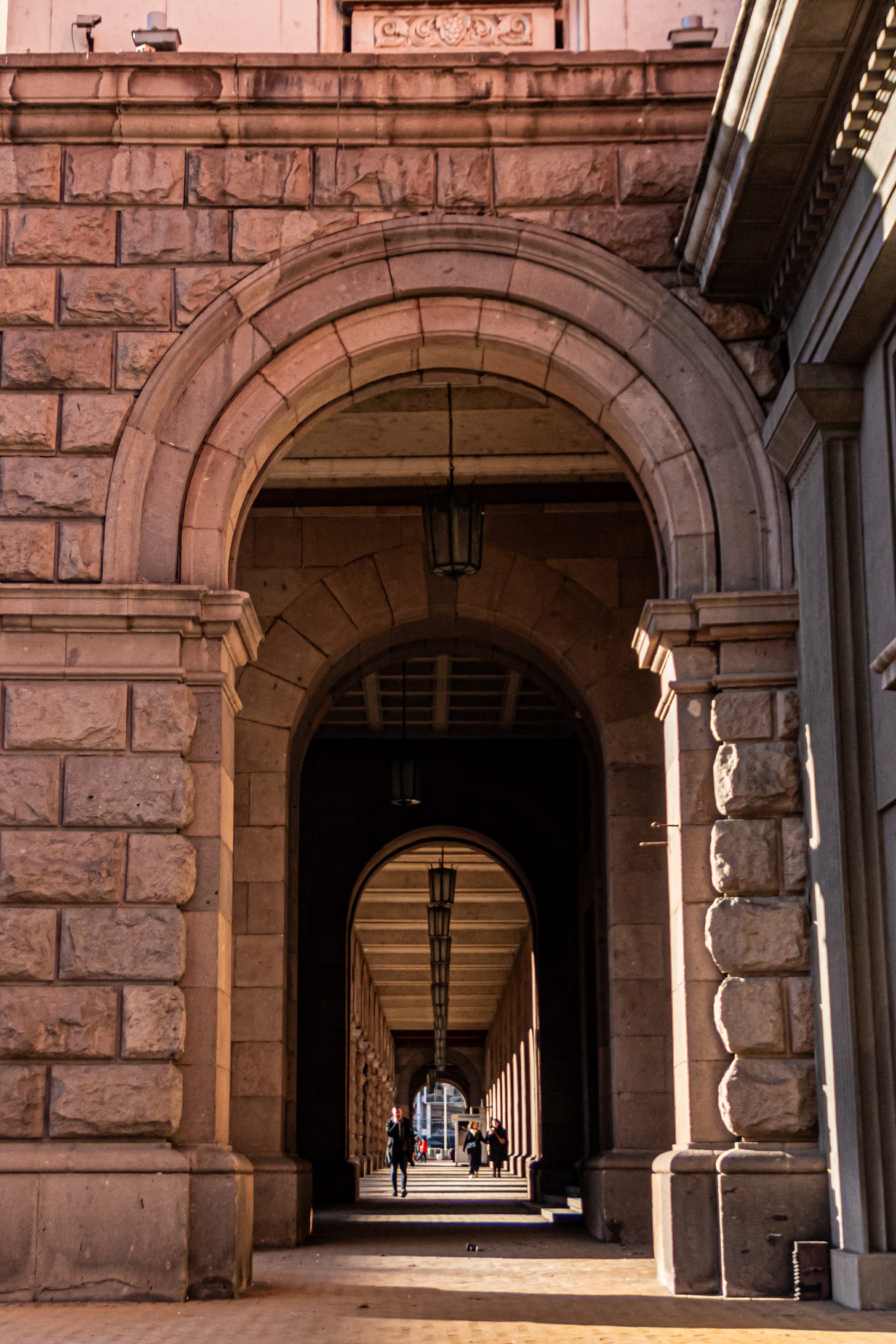


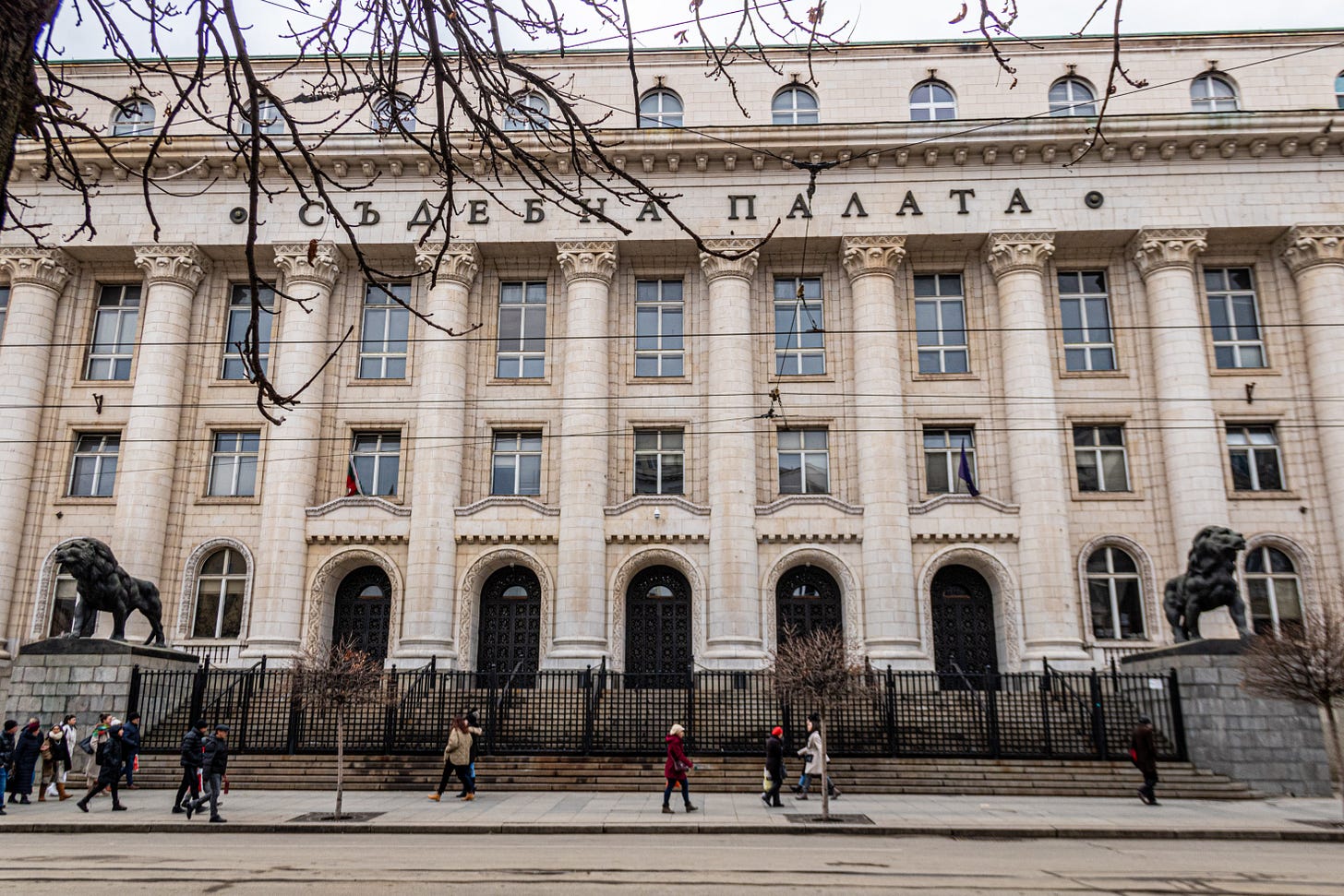




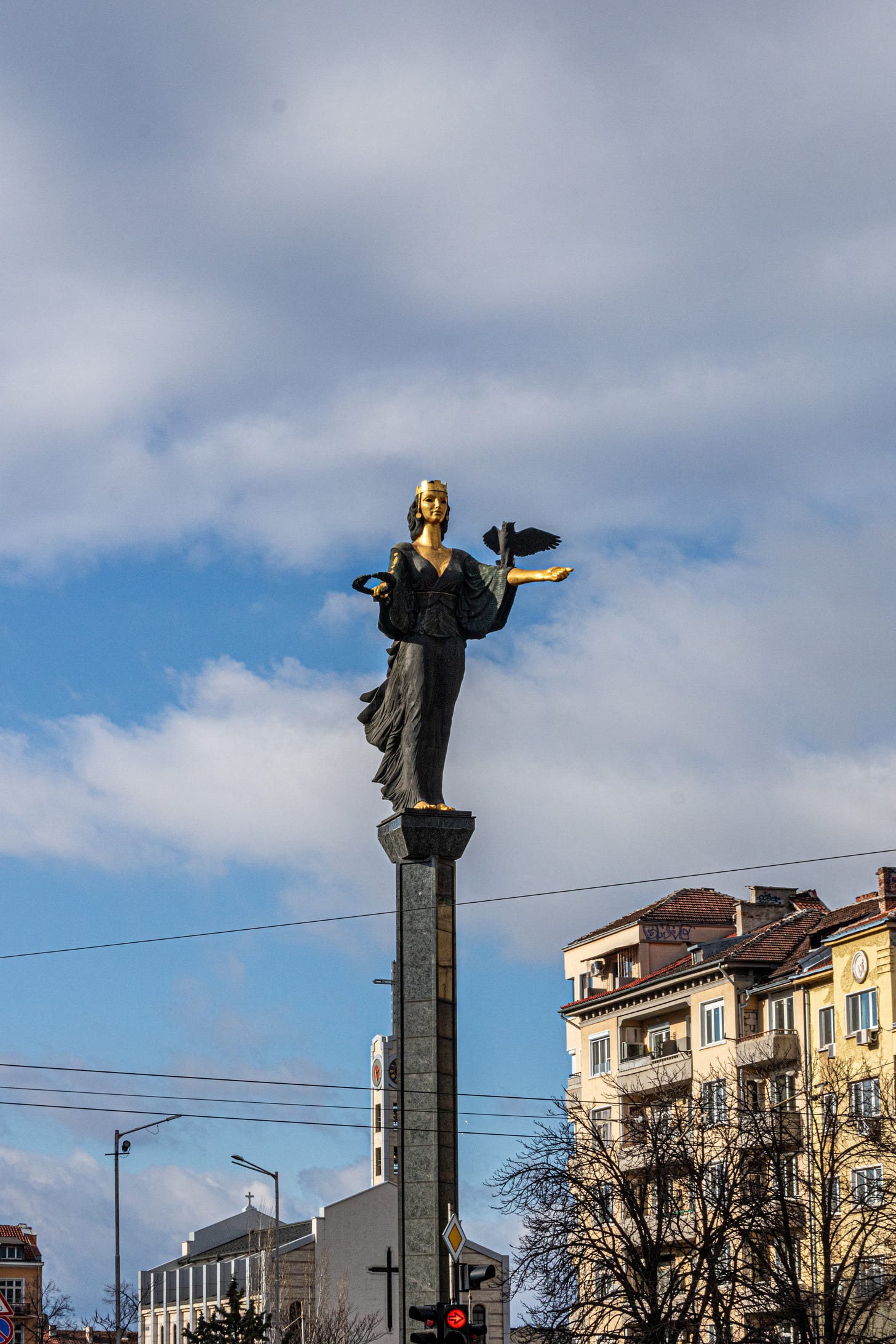






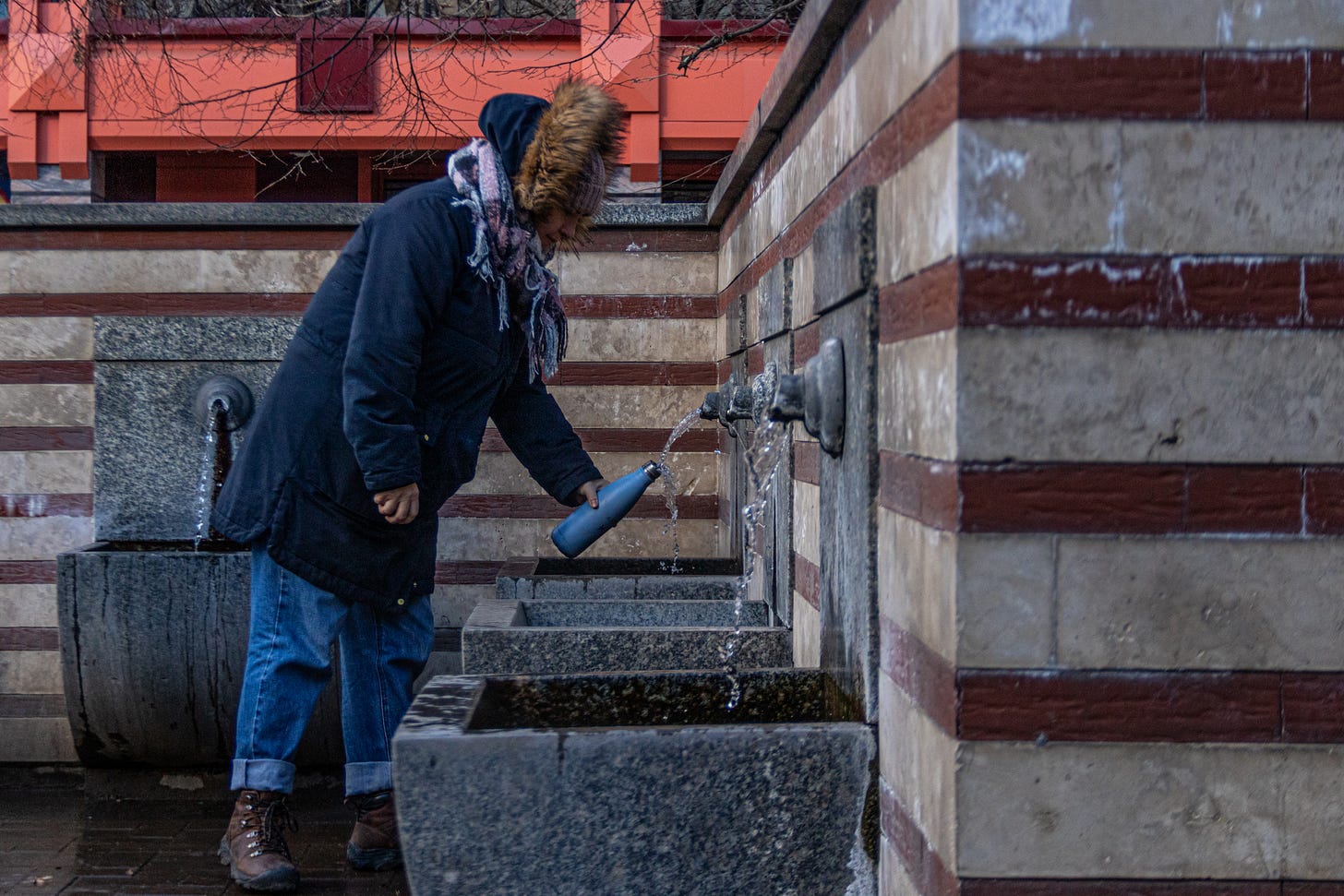





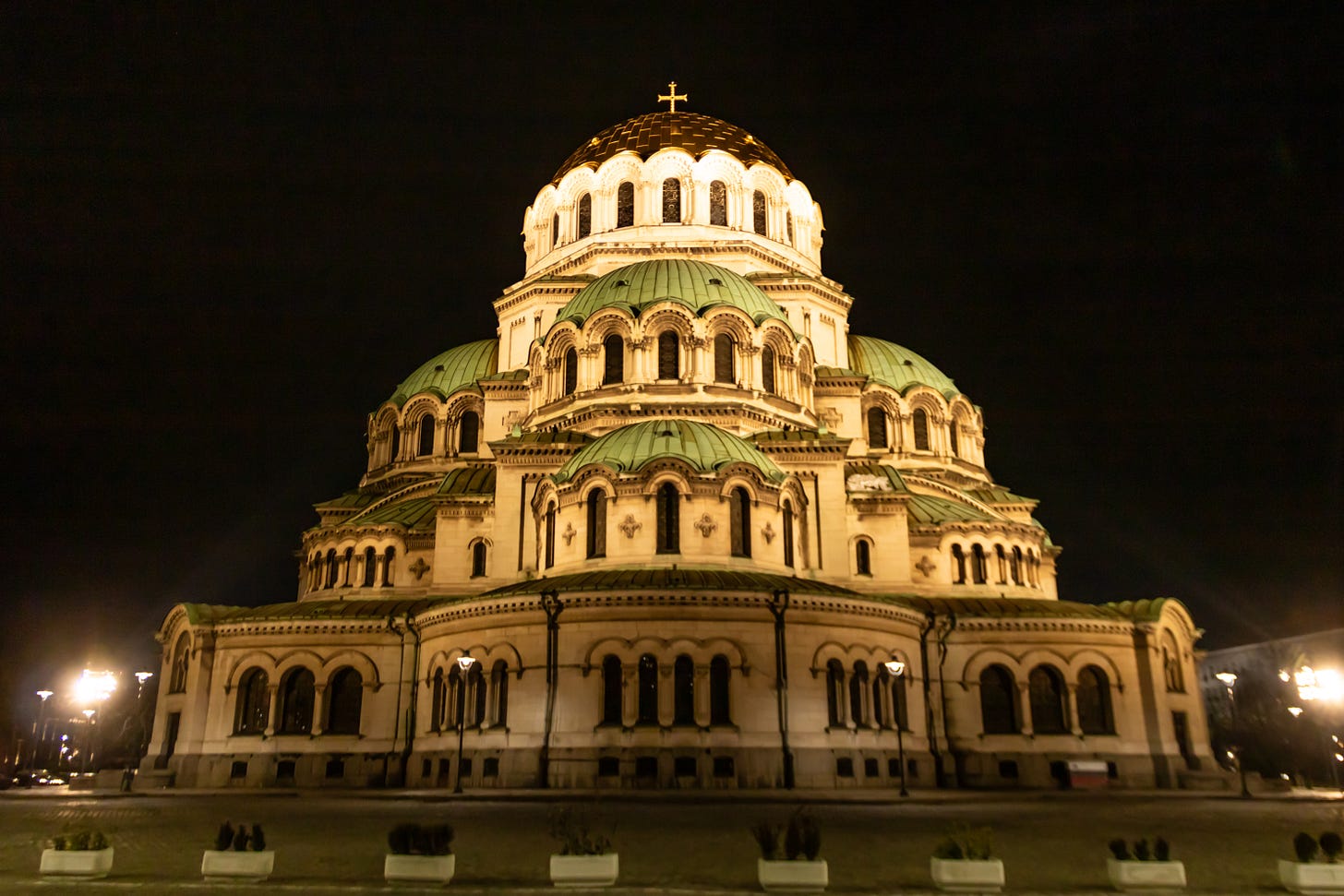











Wow beautiful pictures. I haven't really considered going to Bulgaria, especially in winter season, but your post helped me put Sofia on my travel list!
Sounds like a good time you had. Love the photos